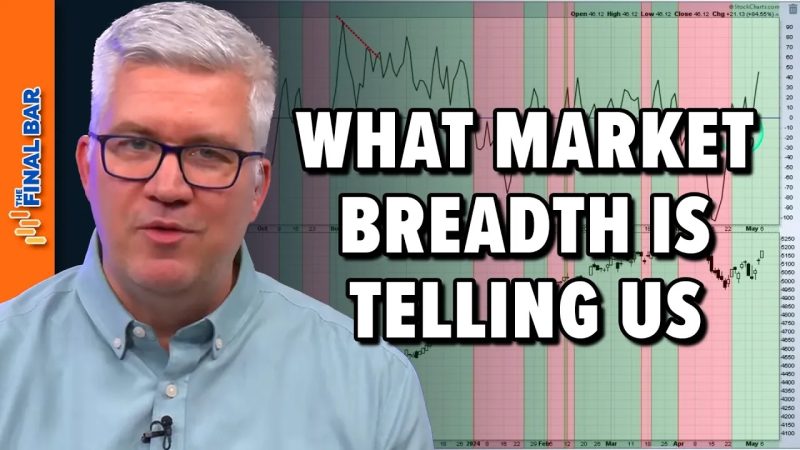
The Must-Follow Market Breadth Indicator: Your Key to Success
Market Breadth Indicator: An Essential Tool for Investors
Understanding the market breadth indicator is crucial for investors seeking to make informed decisions in the financial markets. While many often focus on individual stock performances or broader market indices, the market breadth indicator offers a unique perspective that can provide valuable insights into the overall health and direction of the market. In this article, we will delve into the significance of this indicator, how it is calculated, and why investors should pay close attention to it.
The market breadth indicator, also known as market breadth analysis, measures the proportion of individual stocks participating in a market move. Essentially, it looks beyond the major indices like the S&P 500 or Nasdaq and provides a deeper understanding of market trends by analyzing the number of advancing and declining stocks within a given market. This indicator is particularly useful for assessing the strength or weakness of a market rally or decline.
One of the widely used market breadth indicators is the Advance-Decline Line (AD Line). This indicator is calculated by taking the difference between the number of advancing stocks and declining stocks on a daily basis. By tracking the AD Line over time, investors can identify divergences between the indicator and the market index, which may signal potential shifts in market momentum.
Another essential market breadth indicator is the Advance-Decline Ratio. This ratio compares the number of advancing stocks to the number of declining stocks within a specific index or exchange. A ratio above 1 indicates more advancing stocks, while a ratio below 1 signifies more declining stocks. By monitoring this ratio, investors can gauge the breadth of market participation and identify potential opportunities or risks.
Investors should closely follow the market breadth indicator as it offers a comprehensive view of market internals, beyond the surface-level movements of major indices. A strong market rally with broad participation from individual stocks is generally considered more sustainable and healthy compared to a rally driven by a few large-cap stocks. Conversely, a market decline accompanied by widespread weakness across various sectors and stocks may indicate underlying market weakness.
In conclusion, the market breadth indicator plays a crucial role in providing investors with valuable insights into market trends and dynamics. By analyzing the breadth of market participation through indicators like the AD Line and Advance-Decline Ratio, investors can better assess market strength, identify potential turning points, and make more informed investment decisions. Ultimately, incorporating market breadth analysis into your investment strategy can enhance your ability to navigate the complex and ever-changing financial markets.
